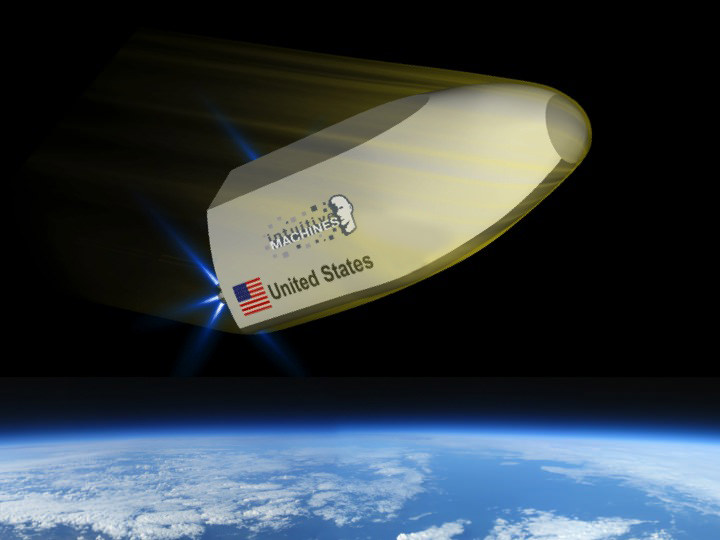Getting stuff into space is complicated and expensive. And what do you do when your fancy space gadget breaks. You print out a new one, of course, with your fancy space 3D printer. It turns out, space exploration is one of the best uses for this technology.
Continue reading “Astronomy Cast Ep. 355: Maker Space: 3D Printing Exploration”
Why Watch ESA Rosetta’s Movie ‘Ambition’? Because We Want to Know What is Possible
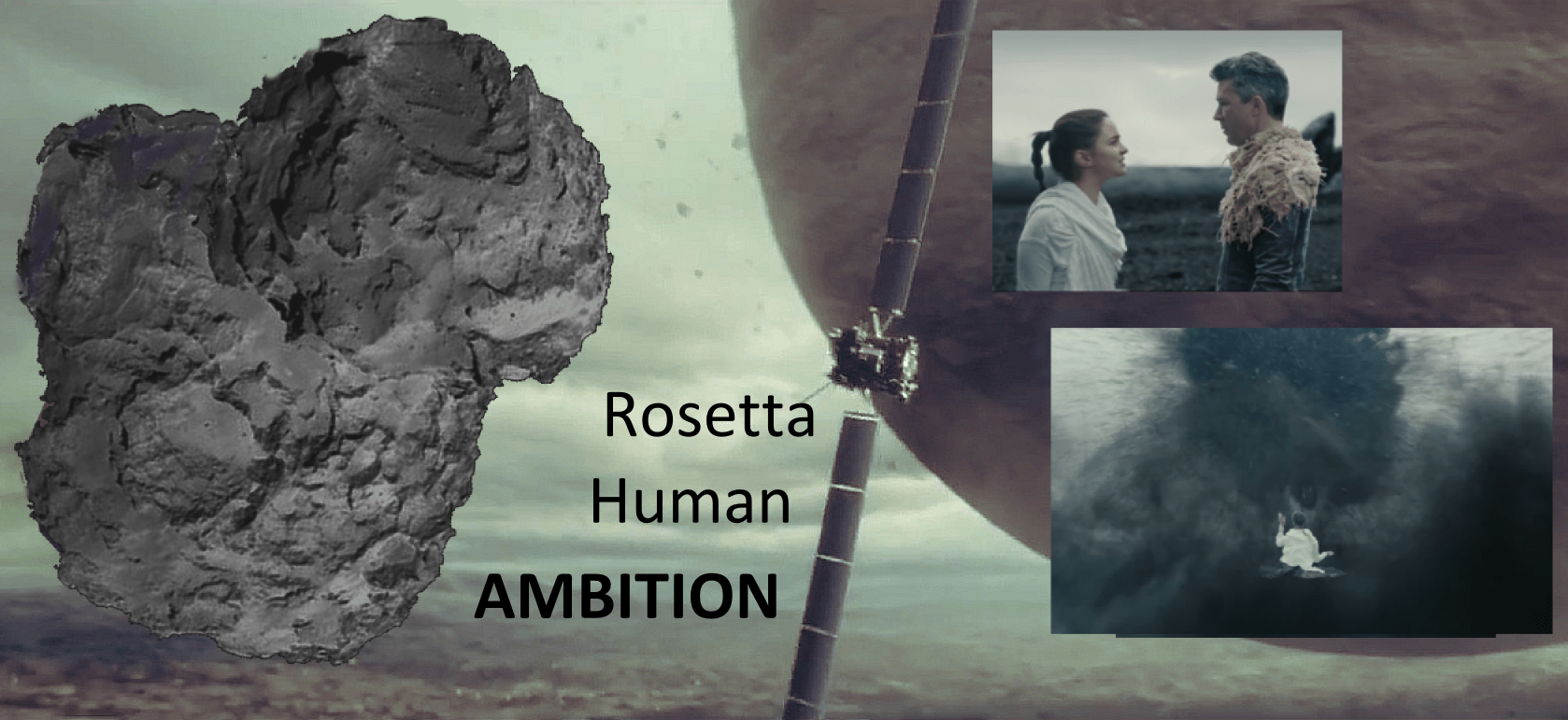
NASA has taken on space missions that have taken years to reach their destination; they have more than a dozen ongoing missions throughout the Solar System and have been to comets as well. So why pay any attention to the European Space Agency’s comet mission Rosetta and their new short film, “Ambition”?
‘Ambition’ might accomplish more in 7 minutes than ‘Gravity’ did in 90.
‘Ambition’ is a 7 minute movie created for ESA and Rosetta, shot on location in Iceland, directed by Oscar-winning Tomek Baginski, and stars Aidan Gillen—Littlefinger of ‘Game of Thrones.’ It is an abstraction of the near future where humans have become demigods. An apprentice is working to merge her understanding of existence with her powers to create. And her master steps in to assure she is truly ready to take the next step.
In the reality of today, we struggle to find grounding for the quest and discoveries that make up our lives on a daily basis. Yet, as the Ebola outbreak or the Middle East crisis reminds us, we are far from breaking away. Such events are like the opening scene of ‘Ambition’ when the apprentice’s work explodes in her face.
The ancient Greeks also took great leaps beyond all the surrounding cultures. They imagined themselves as capable of being demigods. Achilles and Heracles were born from their contact with the gods but they remained fallible and mortal.
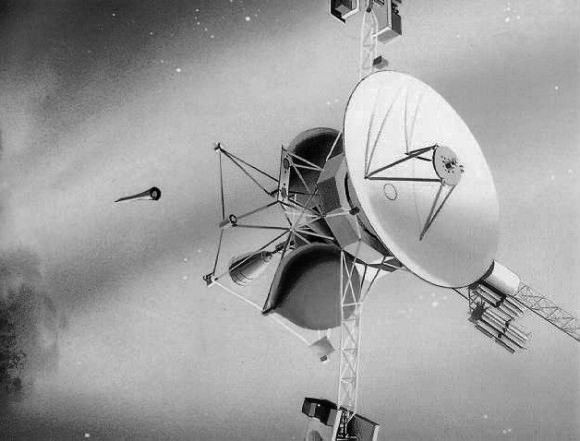
But consider the abstraction of the Rosetta mission in light of NASA’s ambitions. As an American viewing the European short film, it reminds me that we are not unlike the ancient Greeks. We have seen the heights of our powers and ability to repel and conquer our enemies, and enrich our country. But we stand manifold vulnerable.
In ‘Ambition’ and Rosetta, America can see our European cousins stepping ahead of us. The reality of the Rosetta mission is that a generation ago – 25 years — we had a mission as ambitious called Comet Rendezvous Asteroid Flyby (CRAF). From the minds within NASA and JPL, twin missions were born. They were of the Mariner Mark II spacecraft design for deep space. One was to Saturn and the other – CRAF was to a comet. CRAF was rejected by congress and became an accepted sacrifice by NASA in order to save its twin, the Cassini mission.
The short film ‘Ambition’ and the Rosetta mission is a reminder of what American ambition accomplished in the 60’s – Apollo, and the 70s – the Viking Landers, but then it began to falter in the 80s. The ambition of the Europeans did not lose site of the importance of comets. They are perhaps the ultimate Rosetta stones of our star system. They are unmitigated remnants of what created our planet billions of years ago unlike the asteroids that remained close to the Sun and were altered by its heat and many collisions.
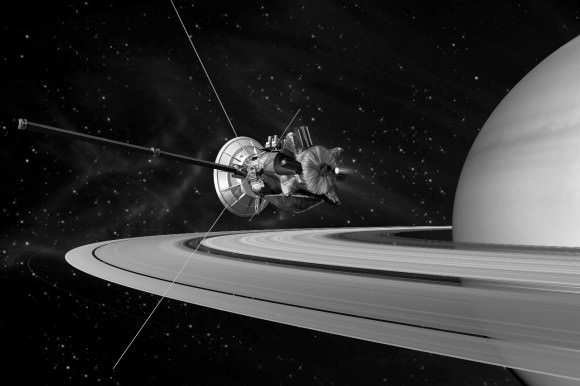
Our cousins picked up a scepter that we dropped and we should take notice that the best that Europe spawned in the last century – the abstract art of Picasso and Stravinsky, rocketry, and jet travel — remains alive today. Europe had the vision to continue a quest to something quite abstract, a comet, while we chose something bigger and more self-evident, Saturn and Titan.
‘Ambition’ shows us the forces at work in and around ESA. They blend the arts with the sciences to bend our minds and force us to imagine what next and why. There have been American epoch films that bend our minds, but yet sometimes it seems we hold back our innate drive to discover and venture out.
NASA recently created a 7 minute film of a harsh reality, the challenge of landing safely on Mars. ESA and Rosetta’s short film reminds us that we are not alone in the quest for knowledge and discovery, both of which set the stage for new growth and invention. America needs to take heed so that we do not wait until we reach the moment when an arrow pierces our heel as with Achilles and we succumb to our challengers.
References:
Rosetta: The Ambition to turn Science Fiction into Science Fact
Carnival of Space #377
The tent is up! This week’s Carnival of Space is hosted by Pamela Hoffman at the Everyday Spacer blog.
Click here to read Carnival of Space #377.
And if you’re interested in looking back, here’s an archive to all the past Carnivals of Space. If you’ve got a space-related blog, you should really join the carnival. Just email an entry to [email protected], and the next host will link to it. It will help get awareness out there about your writing, help you meet others in the space community – and community is what blogging is all about. And if you really want to help out, sign up to be a host. Send an email to the above address.
Make a Deal for Land on the Moon
Whether its asteroid prospecting, mining interests, or space tourism, a lot of industries are taking aim at space exploration. Some pioneering spirits – such as Elon Musk – even believe humanity’s survival depends on our colonizing onto other planets – such as the Moon and Mars. It’s little surprise then that lunar land peddlers have begun making deals for land on the Moon.
Orbiting Solar Observatory Sees It Burn, Burn, Burn: The Ring of Fire
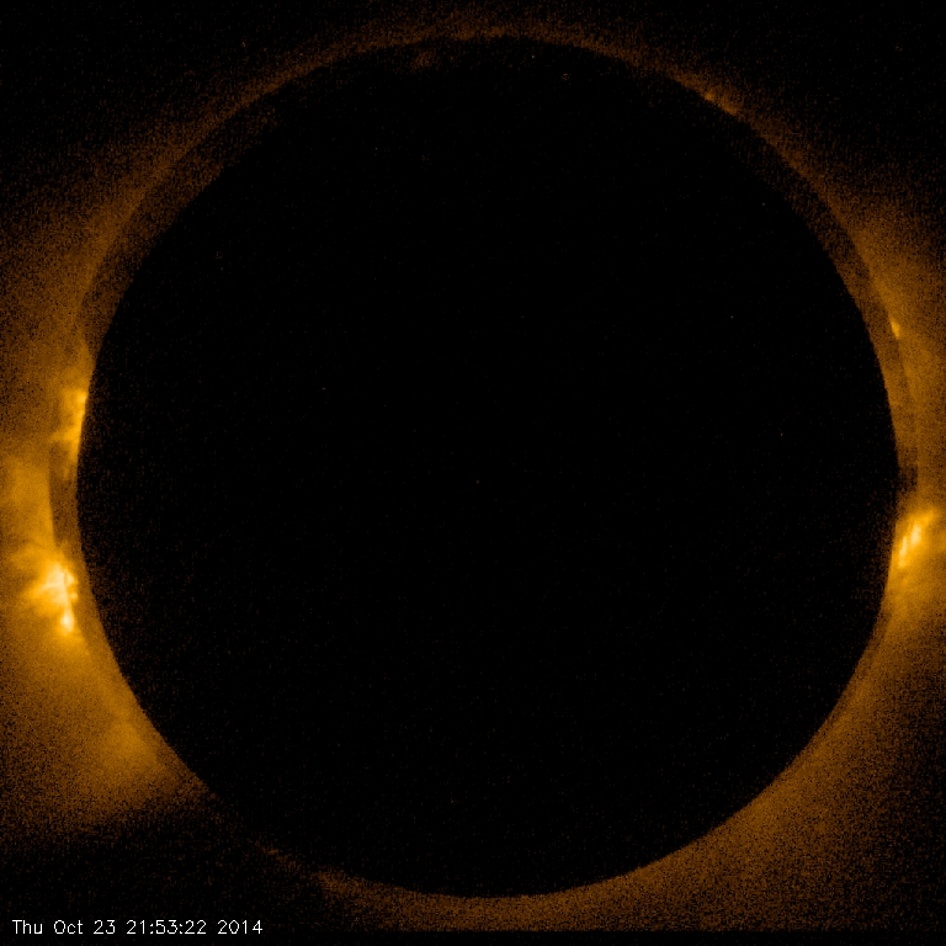
Did you catch the solar eclipse on October 23? If so, you saw the Moon “take a bite” out of the Sun (to various extents, depending on your location) during what was a partial eclipse for viewers on Earth. But for the Hinode (pronunciation alert: that’s “HEE-no-day”) solar observatory satellite, in its Sun-synchronous orbit around Earth at an altitude of 600 km (373 miles), the eclipse was annular – a “ring of fire.”
The image above was captured with Hinode’s X-ray Telescope at the moment of maximum annularity. Want to watch it burn, burn, burn like Hinode did? Check out a video below:
Not to be confused with “annual,” meaning yearly, an annular eclipse occurs when the Moon passes directly in front of the Sun but at such a distance from Earth to not quite manage to fully cover the Sun’s disk. The bright ring of visible Sun around the Moon’s silhouette gives the event its name: annular is from the Latin word anulus, meaning ring.
The next annular eclipse to be visible from Earth will occur on Sept. 1, 2016.
Led by the Japan Aerospace Exploration Agency (JAXA), the Hinode mission is a collaboration between the space agencies of Japan, the United States, the United Kingdom, and Europe, and is now in its eighth year. NASA helped in the development, funding, and assembly of the spacecraft’s three science instruments. Learn more about the mission here.
Image and video credits: NASA/JAXA/SAO
What Strange Places Are Habitable?
Everywhere we look on Earth, we find life. Even in the strangest corners of planet. What other places in the Universe might be habitable?
There’s life here on Earth, but what other places could there be life? This could be life that we might recognize, and maybe even life as we don’t understand it.
People always accuse me of being closed minded towards the search for life. Why do I always want there to be an energy source and liquid water? Why am I so hydrocentric? Scientists understand how life works here on Earth. Wherever we find liquid water, we find life: under glaciers, in your armpits, hydrothermal vents, in acidic water, up your nose, etc.
Water acts as a solvent, a place where atoms can be moved around and built into new structures by life forms. It makes sense to search for liquid water as it always seems to have life here. So where could we go searching for liquid water in the rest of the Universe?
Under the surface of Europa, there are deep oceans. They’re warmed by the gravitational interactions of Jupiter tidally flexing the surface of the moon. There could be life huddled around volcanic vents within its ocean. There’s a similar situation in Saturn’s Moon Enceladus, which is spewing out water ice into space; there might be vast reserves of liquid water underneath its surface. You could imagine a habitable moon orbiting a gas giant in another star system, or maybe you can just let George Lucas imagine it for you and fill it with Ewoks.

Let’s look further afield. What about dying white dwarf stars? Even though their main sequence days are over, they’re still giving off a lot of energy, and will slowly cool down over the coming billions of years. Brown dwarfs could get in on this action as well. Even though they never had enough mass to ignite solar fusion, they’re still generating heat. This could provide a safe warm place for planets to harbor life.
It gets a little trickier in either of these systems. White and brown dwarfs would have very narrow habitable zones, maybe 1/100th the size of the one in our Solar System. And it might shift too quickly for life to get started or survive for very long. This is our view, what we know life to be with water as a solvent. But astrobiologists have found other liquids that might work well as solvents too.

What about life forms that live in oceans of liquid methane on Titan, or creatures that use silicon or boron instead of carbon. It might just not be science fiction after all. It’s a vast Universe out there, stranger than we can imagine. Astronomers are looking for life wherever makes sense – wherever there’s liquid water. And if they don’t find any there, they’ll start looking places that don’t make sense.
What do you think? When we first find life, what will be its core building block? Silicon? Boron? or something even more exotic?
And if you like what you see, come check out our Patreon page and find out how you can get these videos early while helping us bring you more great content!
Small Spacecraft Ejected from Space Station Airlock Will Provide Same-Day, On-Demand Parcel Delivery
Getting to the International Space Station is no easy task. Generally speaking, it involves loading up a space capsule with several tons of cargo and then expending millions of liters of fuel to get it into orbit. This process is time consuming and very expensive. And what if astronauts want to send some things back? Currently, their only option for return capability is provided by the same cargo capsules that are sent up to them.
Orbital Antares GO to WOW US East Coast Spectators for 1st Night Launch on Oct. 27
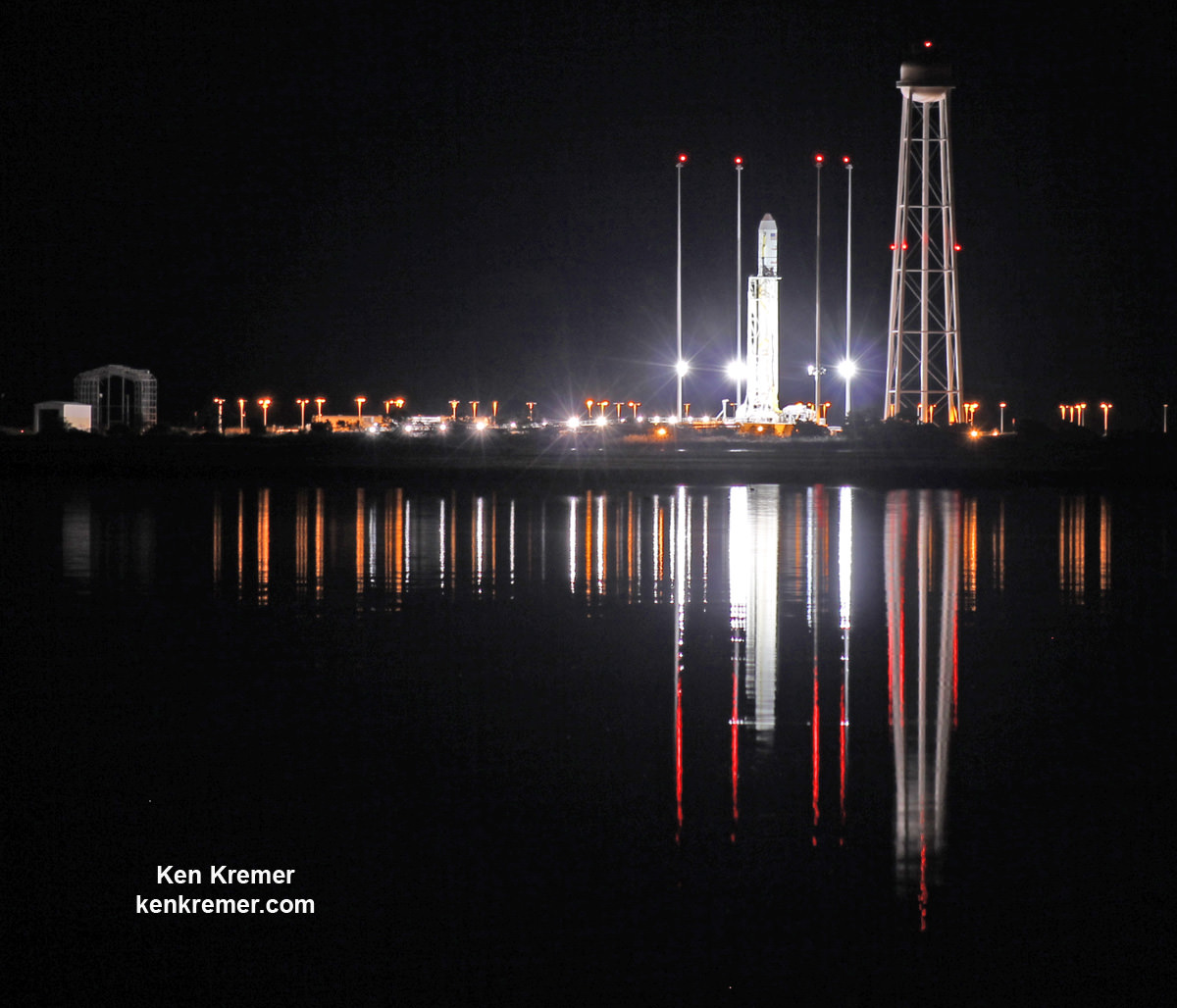
NASA WALLOPS FLIGHT FACILITY, VA – An Orbital Sciences Corp. commercial Antares rocket was given the GO for its first night launch on Oct. 27, following a launch readiness review on Sunday, Oct. 26, between managers from Orbital Sciences Corp. of Dulles, Virginia, and NASA.
The rocket was rolled to the launch pad and erected. Technicians are putting the final touches on the rocket to prepare it for flight to the International Space Station (ISS).
NASA and Orbital Sciences are targeting Antares for blastoff at 6:45 p.m. EDT on Oct. 27 from beachside Launch Pad 0A at the Mid-Atlantic Regional Spaceport (MARS) at NASA Wallops Island Flight Facility on Virginia’s eastern shore.
There is a 10 minute launch window to get Antares off the ground as the launch pad moves into the plane of the space stations orbit. The slightly longer launch window is due to the extra thrust available from using a new, more powerful ATK built upper stage engine.
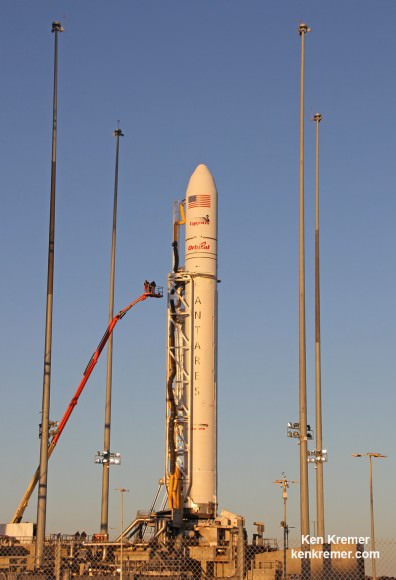
The rare spectacle of a night launch within view of tens of millions could WOW hordes of US East Coast residents in densely populated areas up and down the Atlantic shoreline – weather permitting.
The current forecast calls for an almost unheard of 98% chance of favorable weather conditions at launch time.
Depending on local weather conditions, the Antares blastoff will be visible along much of the US eastern seaboard – stretching from Maine to South Carolina.
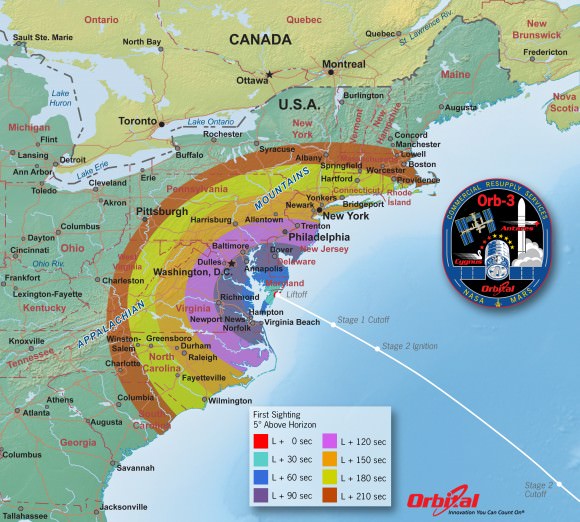
For precise viewing locations and sighting times, see the collection of detailed maps and trajectory graphics courtesy of Orbital Sciences and NASA in my prior story with a complete viewing guide on “How to See the Antares Launch.”
Antares is carrying Orbital’s privately developed Cygnus pressurized cargo freighter loaded with nearly 5000 pounds (2200 kg) of science experiments, research instruments, crew provisions, spare parts, spacewalk and computer equipment and gear on a critical resupply mission dubbed Orb-3 bound for the International Space Station (ISS).
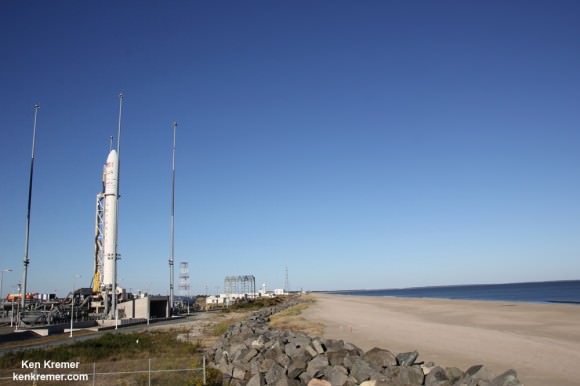
This is the heaviest cargo load yet lofted by a Cygnus. Some 800 pounds additional cargo is loaded on board compared to earlier flights, that’s enabled by using the more powerful ATK CASTOR 30XL second stage for the first time.
Research gear and experiments account for about 1600 pounds (720 kg), or about one third of Cygnus total cargo load.
Among the items aboard are 32 cubesats and deployers, a 6000 psi high pressure replacement nitrogen tank needed for spacewalks from the Quest airlock, experiments enabling the first space-based observations of meteors entering Earth’s atmosphere, determination of how blood flows from the brain to the heart in the absence of gravity, investigations on the impact of space travel on both the human immune system and an individual’s microbiome, the collection of microbes that live in and on the human body, and student science investigations from the SSEP/NCESSE.
“There is nothing more exciting than spaceflight,” said Frank Culbertson, Orbital’s executive vice president of the advanced programs group, at a pre-launch briefing at NASA Wallops.
“It is important to inspire the next generation of scientists. We need to keep the kids inspired to study math and science and keep going back to space. If we stop going to space, it will be very hard to restart.”
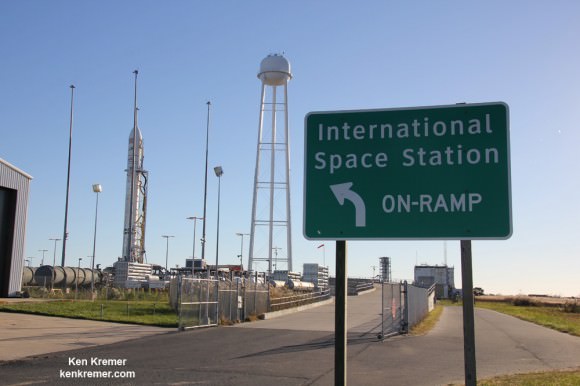
This Cygnus resupply module, dubbed “SS Deke Slayton,” honors one of America’s original Mercury 7 astronauts, Donald “Deke” K. Slayton. He flew on the Apollo-Soyuz Test Project mission in 1975 and championed commercial space endeavors after retiring from NASA in 1982. Slayton passed away in 1993.
The Orbital-3, or Orb-3, mission is the third of eight cargo resupply missions to the ISS through 2016 under the NASA Commercial Resupply Services (CRS) contract award valued at $1.9 Billion.
Orbital Sciences is under contract to deliver 20,000 kilograms of research experiments, crew provisions, spare parts and hardware for the eight ISS flight.
NASA Television will broadcast live coverage of the launch, including pre- and post-launch briefings and arrival at the station. Launch coverage begins at 5:45 p.m. EDT.
NASA will broadcast the Antares launch live on NASA TV starting at 5:45 p.m. Monday – http://www.nasa.gov/nasatv
You can also watch the pre- and post launch briefings on Monday on NASA TV.
Of course the absolute best viewing will be locally in the mid-Atlantic region closest to Wallops Island.
Locally at Wallops you’ll get a magnificent view and hear the rockets thunder at the NASA Wallops Visitor Center or other local spots around the Chincoteague National Wildlife Refuge area.
For more information about the Wallops Visitors Center, including directions, see: http://www.nasa.gov/centers/wallops/visitorcenter
Watch here for Ken’s onsite reporting direct from NASA Wallops.
Stay tuned here for Ken’s continuing Earth and Planetary science and human spaceflight news.
…………….
Learn more about Commercial Space, Orion and NASA Human and Robotic Spaceflight at Ken’s upcoming presentations:
Oct 27/28: “Antares/Cygnus ISS Rocket Launch from Virginia”; Rodeway Inn, Chincoteague, VA
How to Watch Spectacular 1st Nighttime Antares Launch to ISS on Oct. 27 – Complete Viewing Guide

NASA WALLOPS FLIGHT FACILITY, VA – Tens of millions of US East Coast residents can expect a dinnertime spectacular for the first ever nighttime launch of the commercial Orbital Sciences Corp. Antares rocket slated to blastoff on Monday evening, October 27, from a beachside NASA launch base along the eastern shore of Virginia – if the weather holds as currently forecast.
You can watch live, below.
Antares is carrying Orbital’s private Cygnus cargo freighter loaded with a diverse array of science experiments on a critical cargo resupply mission named Orb-3, and is bound for the International Space Station (ISS).
Broadcast live streaming video on Ustream
NASA and Orbital Sciences are now targeting liftoff at 6:45 p.m. EDT on Oct. 27 from Launch Pad 0A at the Mid-Atlantic Regional Spaceport (MARS) at NASA Wallops Island Flight Facility on Virginia’s shore.
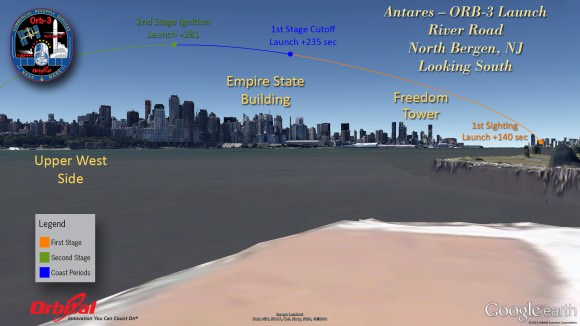
The launch to the ISS was delayed three days due to Hurricane Gonzalo and its direct hit on the island of Bermuda which is also home to a critical rocket tracking station – as reported here. The tracking is required to ensure public safety.
If you have never seen a rocket launch, this could be the one for you – especially since its conveniently in the early evening and you don’t have to take the long trek to the Kennedy Space Center in Florida.
Here’s our complete guide on “How to See the Antares/Cygnus Oct. 27 Blastoff” – chock full of viewing maps and trajectory graphics (above and below) from a variety of prime viewing locations, including historic and notable landmarks Washington, DC, NYC, New Jersey, Maryland, Virginia, and more.
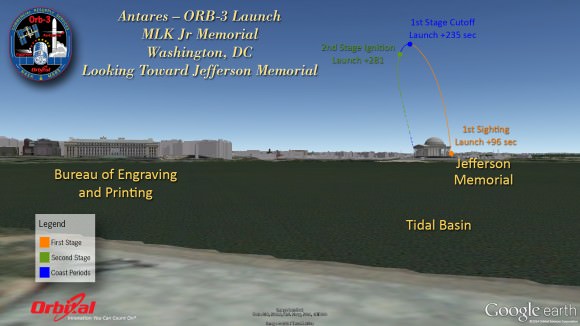
Depending on local weather conditions, the Antares blastoff will be visible along much of the US eastern seaboard – stretching from Maine to South Carolina.
For precise viewing locations and sighting times, see the collection of detailed maps and trajectory graphics courtesy of Orbital Sciences and NASA.
Antares first night launch will also be visible to some inland regions, including portions of New England, Pennsylvania, and West Virginia.
Of course the absolute best viewing will be locally in the mid-Atlantic region closest to Wallops Island.
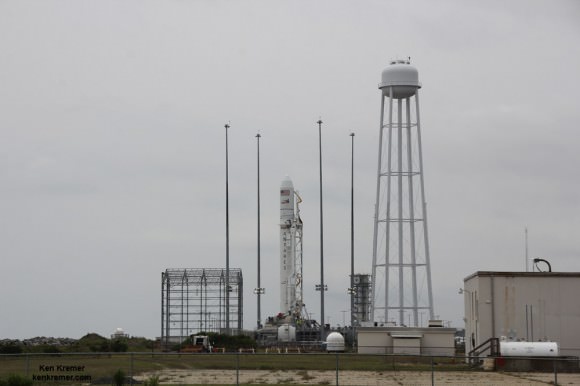
Locally at Wallops you’ll get a magnificent view and hear the rockets thunder at either the NASA Wallops Visitor Center or the Chincoteague National Wildlife Refuge/Assateague National Seashore.
For more information about the Wallops Visitors Center, including directions, see: http://www.nasa.gov/centers/wallops/visitorcenter
The pressurized Cygnus cargo spacecraft is loaded with some 5,000 pounds of research experiments, top notch student science investigations from the NCESSE/SSEP, supplies, spare parts, and crew provisions on what will be the fourth Cygnus flight overall, including a demonstration flight in 2013.
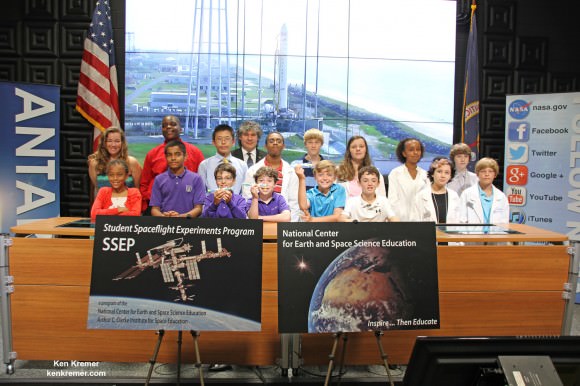
This is the heaviest Cygnus cargo load to date because the Antares rocket is outfitted with a more powerful second stage from ATK – for the first time.
Altogether eight operational resupply missions will be flown for NASA under the Commercial Resupply Services (CRS) contract. That’s the same contract NASA has with SpaceX and that company’s just completed Dragon CRS-4 mission which ended with a successful Pacific Ocean splashdown on Saturday, Oct. 25 – as I reported here.
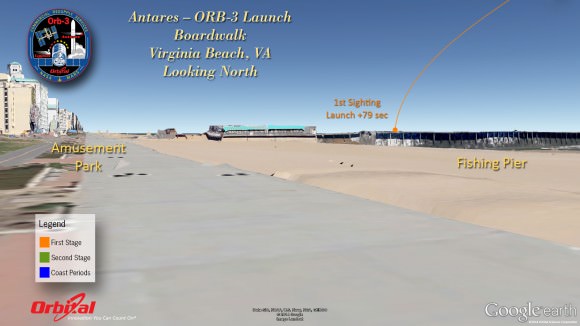
It is the third of eight cargo resupply missions to the ISS under Orbital’s Commercial Resupply Services (CRS) contract with NASA through 2016.
The Orbital-3, or Orb-3, mission is the third of the eight cargo resupply missions to the ISS under the NASA CRS award valued at $1.9 Billion.
This Cygnus resupply module, dubbed “SS Deke Slayton,” honors one of America’s original Mercury 7 astronauts, Donald “Deke” K. Slayton. He flew on the Apollo-Soyuz Test Project mission in 1975 and championed commercial space endeavors after retiring from NASA in 1982. Slayton passed away in 1993.
NASA Television will broadcast live coverage of the event, including pre- and post-launch briefings and arrival at the station. Launch coverage begins at 5:45 p.m. Monday – http://www.nasa.gov/nasatv
You can also watch the pre- and post launch briefing on Sunday and Monday on NASA TV.
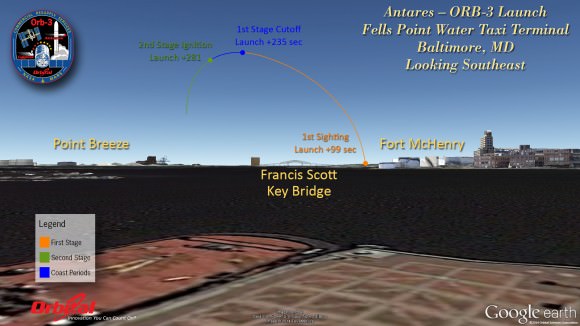
The weather prognosis is currently very favorable with a greater than a 90% chance of acceptable weather conditions at launch time.
Watch here for Ken’s onsite reporting direct from NASA Wallops.
Stay tuned here for Ken’s continuing Earth and Planetary science and human spaceflight news.
…………….
Learn more about Commercial Space, Orion and NASA Human and Robotic Spaceflight at Ken’s upcoming presentations:
Oct 26/27: “Antares/Cygnus ISS Rocket Launch from Virginia”; Rodeway Inn, Chincoteague, VA
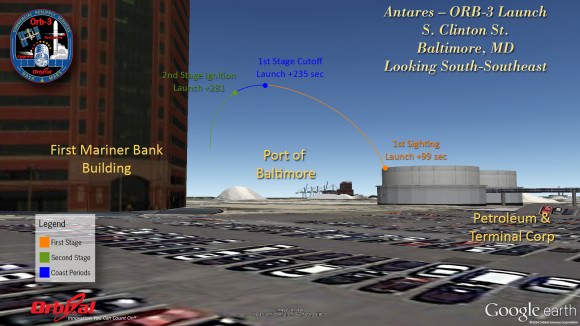
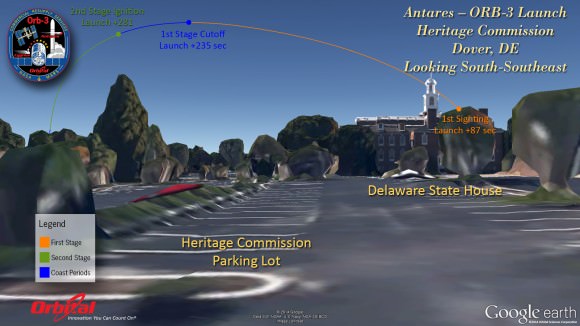
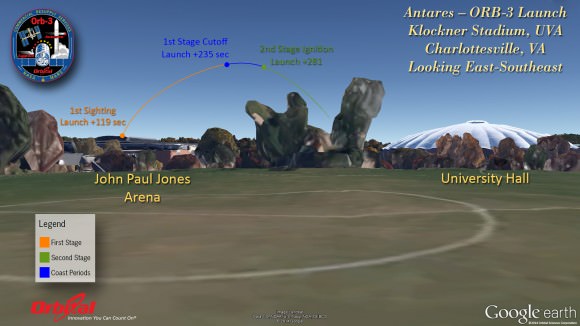
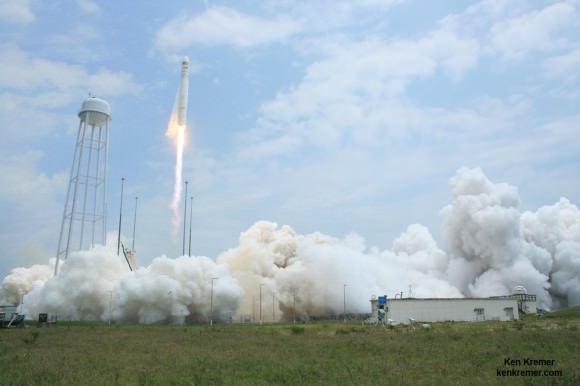
SpaceX Dragon Departs Space Station after Delivering Slew of Science and Returns with Ocean Splashdown
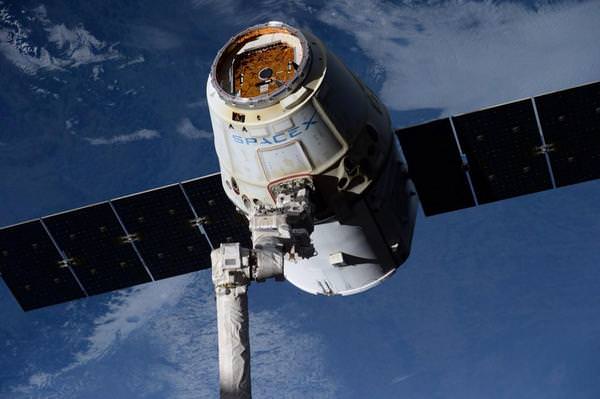
Concluding a busy five week mission, the SpaceX Dragon CRS-4 commercial cargo ship departed the International Space Station (ISS) this morning, Oct. 25, after delivering a slew of some 2.5 tons of ground breaking science experiments and critical supplies that also inaugurated a new era in Earth science at the massive orbiting outpost following installation of the ISS-RapidScat payload.
Dragon was released from the snares of the station’s robotic arm at 9: 57 a.m. EDT while soaring some 250 mi (400 km) over the northwest coast of Australia.
It returned safely to Earth with a splashdown in the Pacific Ocean some six hours later, capping the fourth of SpaceX’s twelve contracted station resupply missions for NASA through 2016.
“The Dragon is free!” exclaimed NASA commentator Rob Navias during a live broadcast on NASA TV following the ungrappling this morning. “The release was very clean.”
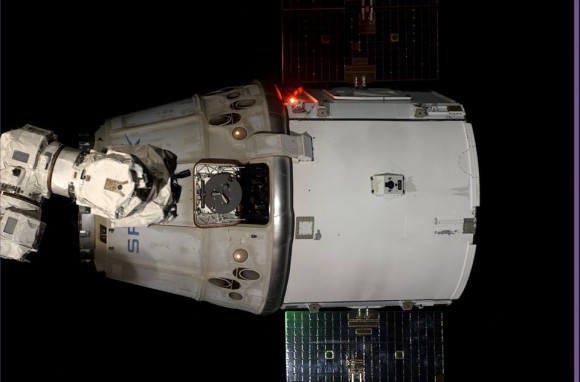
The private resupply ship was loaded for return to Earth with more than 3,276 pounds of NASA cargo and science samples from the station crew’s investigations on “human research, biology and biotechnology studies, physical science investigations, and education activities sponsored by NASA and the Center for the Advancement of Science in Space, the nonprofit organization responsible for managing research aboard the U.S. national laboratory portion of the space station,” said NASA.
The release set up a quick series of three burns by the ship’s Draco thrusters designed to carry Dragon safely away from the station.
NASA astronauts Reid Wiseman and Butch Wilmore quickly retracted the arm working from their robotics workstation in the domed Cupola module.
“Thanks for the help down there,” the astronauts radioed. “It was a great day.”
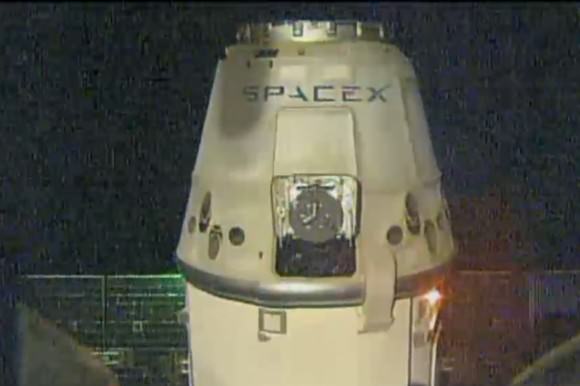
The first burn took place a minute later at about 9:58 a.m. EDT and the second at about 10:00 a.m. A yaw maneuver at 10:05 a.m. set up the orientation required for the third burn at about 10:08 a.m.
Dragon moved away quickly during the nighttime release and was already outside the Keep Out Sphere (KOS), an imaginary bubble surrounding the station at a distance of 200 m. It disappeared quickly in the dark and was barely visible within minutes.
“The propulsion systems are in good shape,” said Navias. “All systems on Dragon are functioning perfectly.”
With Dragon safely gone following the trio of burns, the next major event was the deorbit burn at 2:43 p.m. EDT at a distance of about 90 statute miles from the station.
Dragon slipped out of orbit. After surviving the scorching heat of reentry through the Earth’s atmosphere, the ship sequentially deployed its drogue chutes and three main parachutes at about 3:30 p.m.
Splashdown in the Pacific Ocean occurred as expected at about 3:39 p.m., approximately 265 miles west of the Baja peninsula.
Dragon is the only vehicle that can return intact from the ISS with a substantial load of cargo and is carrying critical science samples for distribution to researchers.
Today’s Dragon departure starts a week of heavy traffic of comings and goings to the ISS involving a series of US and Russian unmanned cargo ships.
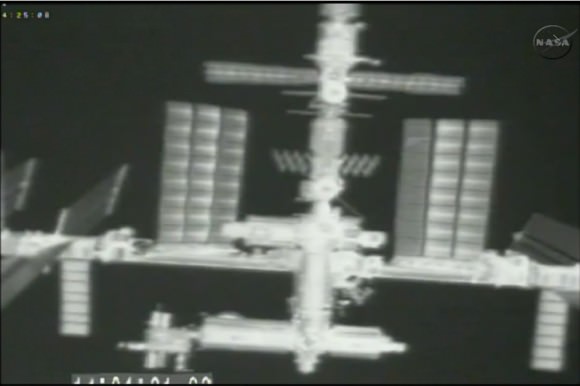
The Orbital Sciences Antares rocket with the commercial Cygnus cargo freighter is set to launch on Monday, Oct. 27, from NASA Wallops, VA. It will dock at the ISS on Nov. 2 at the Earth-facing port on the Harmony module just vacated by Dragon.
Russia’s Progress 56 unmanned cargo ship will also undock on Oct. 27. And Progress 57 will launch from Baikonur on Wednesday, Oct 29.
The SpaceX Dragon CRS-4 cargo resupply mission thundered to space on the company’s Falcon 9 rocket from Space Launch Complex-40 at Cape Canaveral Air Force Station in Florida on Sept. 21.
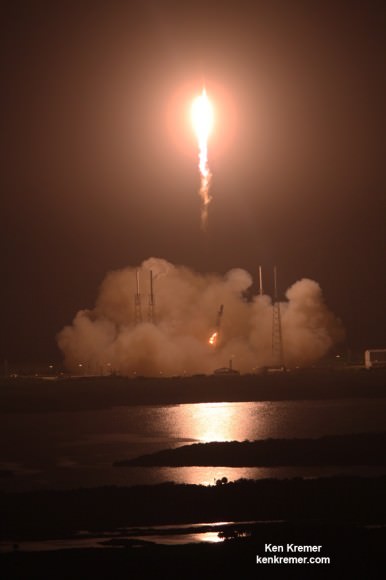
Dragon was successfully berthed at the Harmony module on Sept. 23, 2014.
Among the nearly 5000 pounds of cargo hauled up by Dragon was as an Earth observation platform named ISS-RapidScat loaded in the unpressurized trunk section.
Also loaded aboard were a slew of science experiments, spare parts, crew provisions, food, clothing and supplies to the six person crews living and working aboard the ISS soaring in low Earth orbit under NASA’s Commercial Resupply Services (CRS) contract.
It also carried the first 3-D printer to space for the first such space based studies ever attempted by the astronaut crews. The printer will remain at the station for at least the next two years.
20 mice housed in a special rodent habitat were also aboard, as well as fruit flies.
The ISS Rapid Scatterometer, or ISS-RapidScat, is NASA’s first research payload aimed at conducting near global Earth science from the station’s exterior and will be augmented with others in coming years.
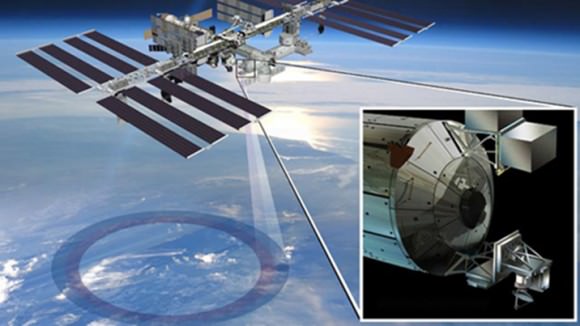
The successful installation and activation of the ISS-RapidScat science instrument on the exterior of Europe’s Columbus module in late September and early October inaugurated a new era in space station science.
RapidScat is designed to monitor ocean winds for climate research, weather predictions, and hurricane monitoring.
The 1280 pound (580 kilogram) experimental instrument is already collecting its first science data following its recent power-on and activation at the station.
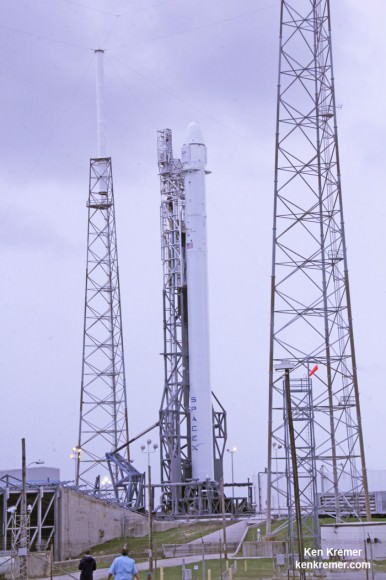
“This mission enabled research critical to achieving NASA’s goal of long-duration human spaceflight in deep space,” said Sam Scimemi, director of the International Space Station division at NASA Headquarters.
“The delivery of the ISS RapidScatterometer advances our understanding of Earth science, and the 3-D printer will enable a critical technology demonstration. Investigations in the returned cargo could aid in the development of more efficient solar cells and semiconductor-based electronics, the development of plants better suited for space, and improvements in sustainable agriculture.”
The next SpacX cargo Dragon on the CRS-5 mission is slated for launch no earlier then Dec. 9.
Stay tuned here for Ken’s continuing Earth and Planetary science and human spaceflight news.
…………….
Learn more about Commercial Space, Orion and NASA Human and Robotic Spaceflight at Ken’s upcoming presentations:
Oct 26/27: “Antares/Cygnus ISS Rocket Launch from Virginia”; Rodeway Inn, Chincoteague, VA




